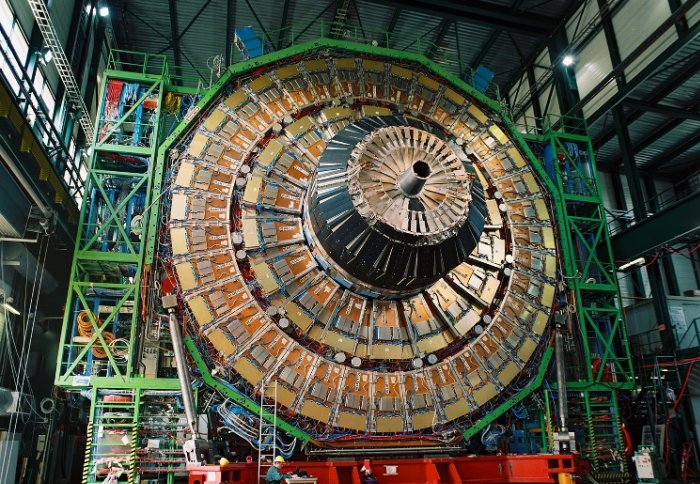

1964 paper recognised as a milestone by <em>Physical Review Letters - News</em>
See also...
By Danielle Reeves
12 June 2008
A research paper written by Imperial Physics Professor Tom Kibble and two colleagues in 1964 has been selected as one of the most important papers of the last 50 years by the leading journal Physical Review Letters.
The paper, titled "Global conservation laws and massless particles" has been named a milestone paper, as part of Physical Review Letters' 50th anniversary celebrations, during which they have highlighted selected papers from a particular year in each week's journal.
Professor Tom Kibble's 1964 paper has been highlighted by a top journal as a milestone
Particle physicist Professor Kibble has been based at Imperial since 1959. The paper selected by Physical Review Letters, which Professor Kibble wrote in collaboration with two American scientists - NSF postdoctoral fellow Gerald Guralnik, and Richard Hagen from the University of Rochester, New York - was one of three describing a new theory of how certain particles can acquire mass, which has come to be known as the "Higgs mechanism".
The paper is one of a number of theoretical works which has shaped particle physics through the 20th century. It is one of many studies which have led to the development of the biggest experiment in the world at CERN in Switzerland, where scientists, including Imperial physicists, hope to find evidence of the existence of the Higgs Boson, a theorised "god particle" which gives mass to other particles.
We asked Professor Kibble to explain the significance of his 1964 paper and talk about his career in particle physics in more detail:
What impact has this paper had on particle physics?
It was one of three papers published in the same volume of PRL that independently described how spontaneous symmetry breaking can make particles acquire mass – which is now known as the Higgs mechanism. These papers played a key role in the development of a unified theory of two of the fundamental types of forces between elementary particles, the weak and electromagnetic interactions.
This "electroweak" theory suggests there is an underlying symmetry between these interactions that is hidden except at very high energy by the phenomenon of spontaneous symmetry breaking. It was developed among others by Professor Abdus Salam at Imperial College, for which he shared the 1979 Nobel Prize for Physics with Sheldon Glashow and Steven Weinberg. It forms part of the standard model of particle physics, which has been extensively verified over the last forty years.
What do you think have been the most exciting developments in this field over the last 40 years?
The key experiments that finally established the validity of the electroweak theory were done at CERN in Geneva – finding the W and Z particles, the carriers of the weak interactions, in 1983, and earlier, in 1973, the discovery of the "neutral current" interactions that signal the presence of the Z, one of the key innovations of the theory. In more recent years, perhaps the most exciting discovery, because it went beyond the standard model, was of "neutrino mixing": neutrinos had always been believed to be massless, but in fact they have tiny but nonzero masses, and the three types of neutrino can spontaneously change into each other.
Which physics experiments underway today are you especially interested in?
The answer has to be the forthcoming experiments at the Large Hadron Collider (LHC) in CERN, on which a large team from Imperial College is involved, under the leadership of Professor Tejinder Virdee. Among other things they are looking for the Higgs boson – I do hate the term 'god particle'! This particle is really a side-effect of the Higgs mechanism, and is the last missing piece in the standard model. Finding it would be wonderful.
Even more exciting would be finding something different – there could be no Higgs boson, though I think that unlikely, or several. The standard model is certainly not the last word – it is far too messy to be that! Among the most promising ideas for extending it is to incorporate "supersymmetry", a theory that would require every particle to have a heavier partner, the lightest of which might well turn up at the LHC. It also suggests that there should be several Higgs bosons. I am also very interested in a number of cosmological experiments designed to tie down the nature of the mysterious "dark matter" and "dark energy" that seem to dominate the Universe. From my personal perspective the greatest prize would the discovery of "cosmic strings" – hypothetical objects I've been interested in for many years that might be present in the Universe but for which there is as yet no evidence at all!
-Ends-
Article text (excluding photos or graphics) available under an Attribution-NonCommercial-ShareAlike Creative Commons license.
Photos and graphics subject to third party copyright used with permission or © Imperial College London.
Reporter
Justina Zurauskiene
Department of Life Sciences

Contact details
Email: press.office@imperial.ac.uk
Show all stories by this author



